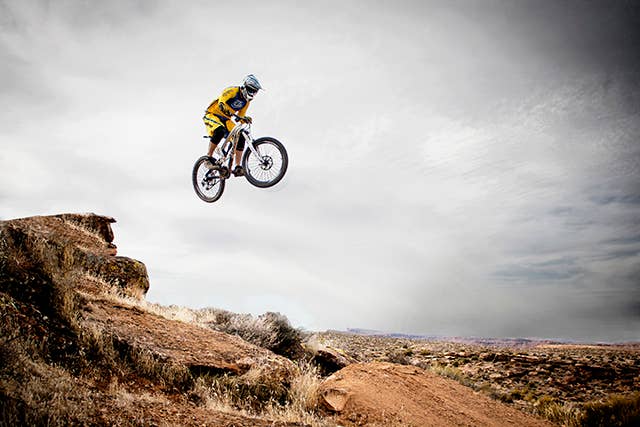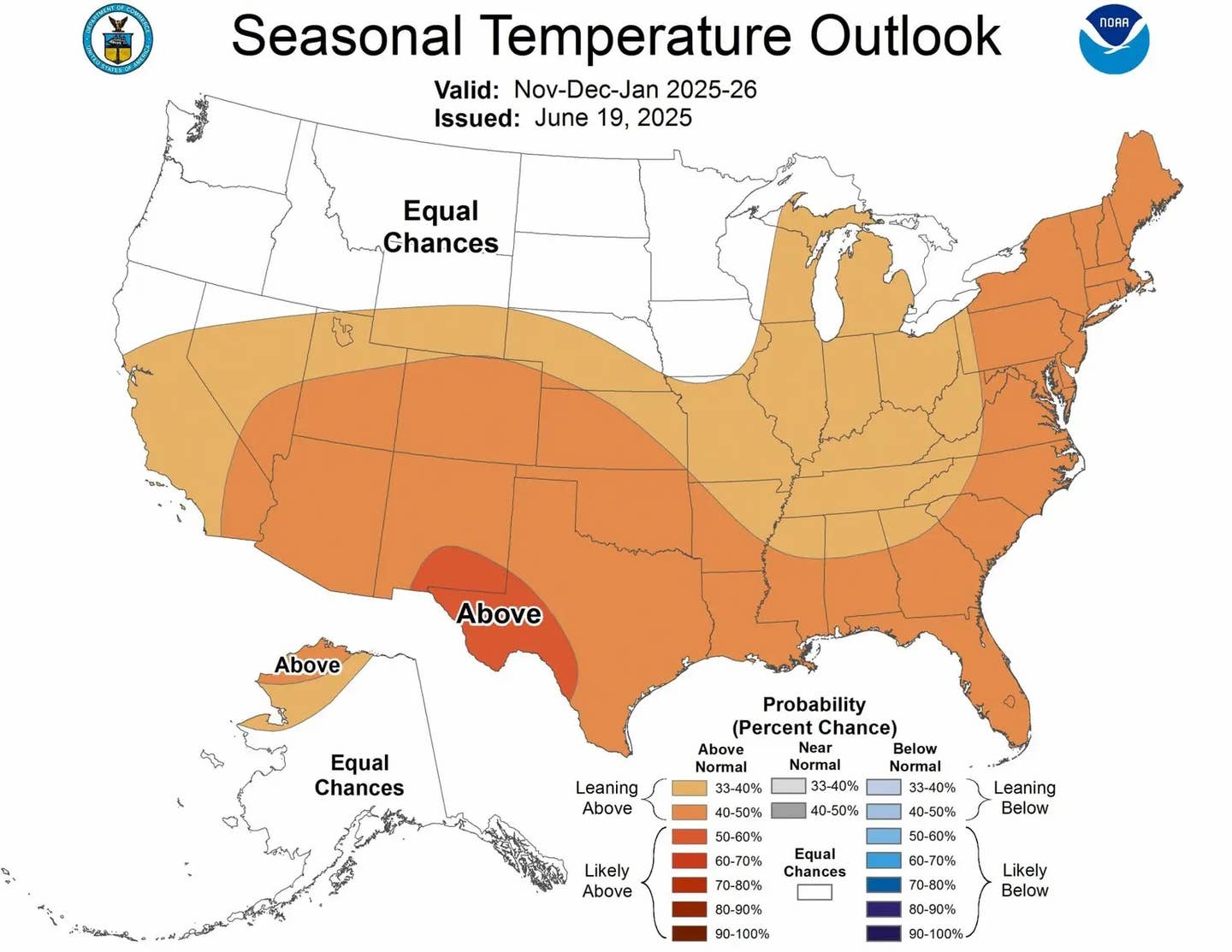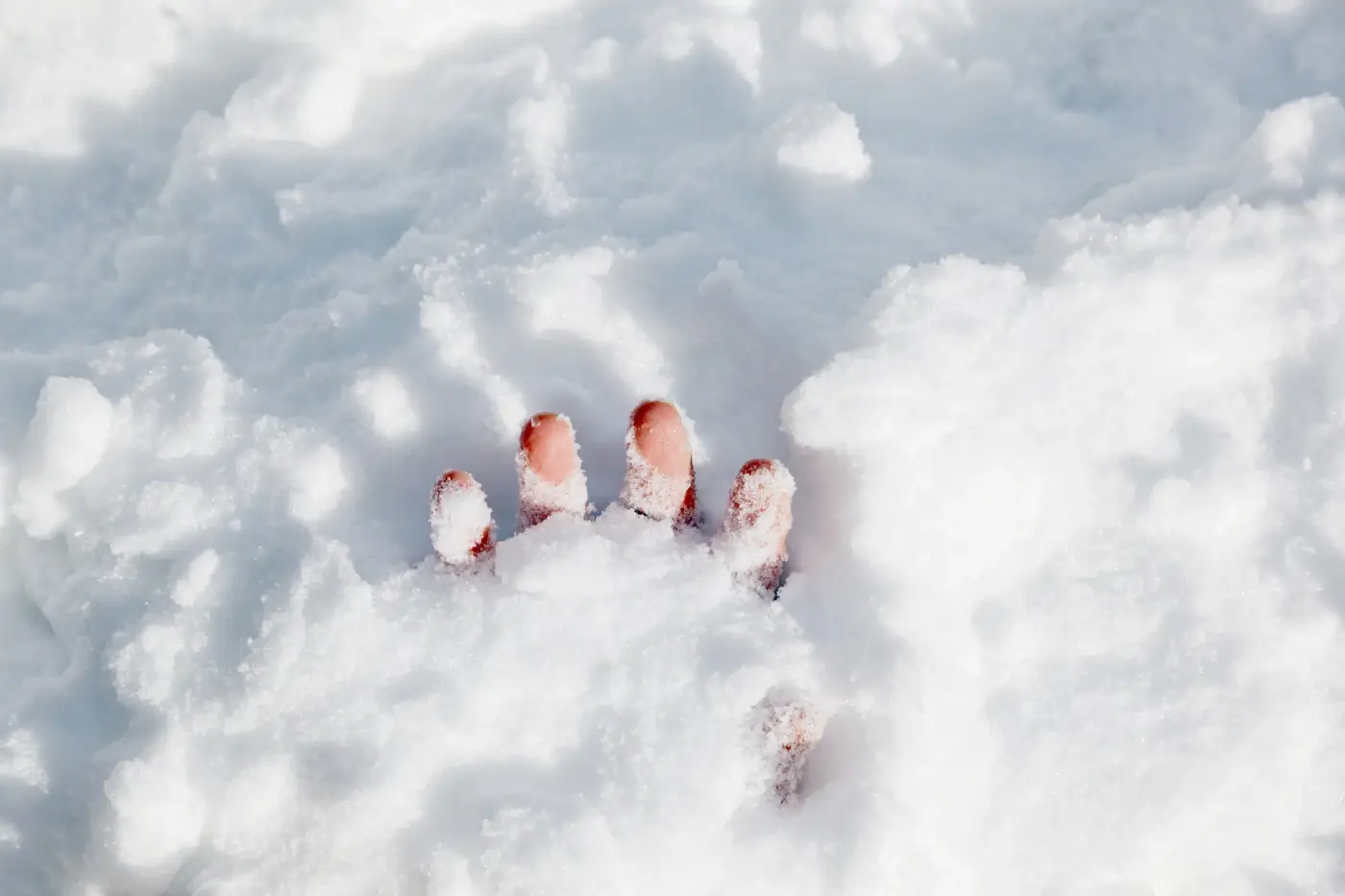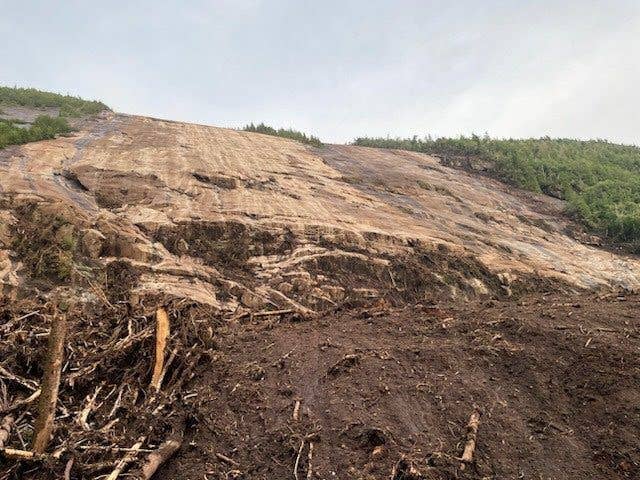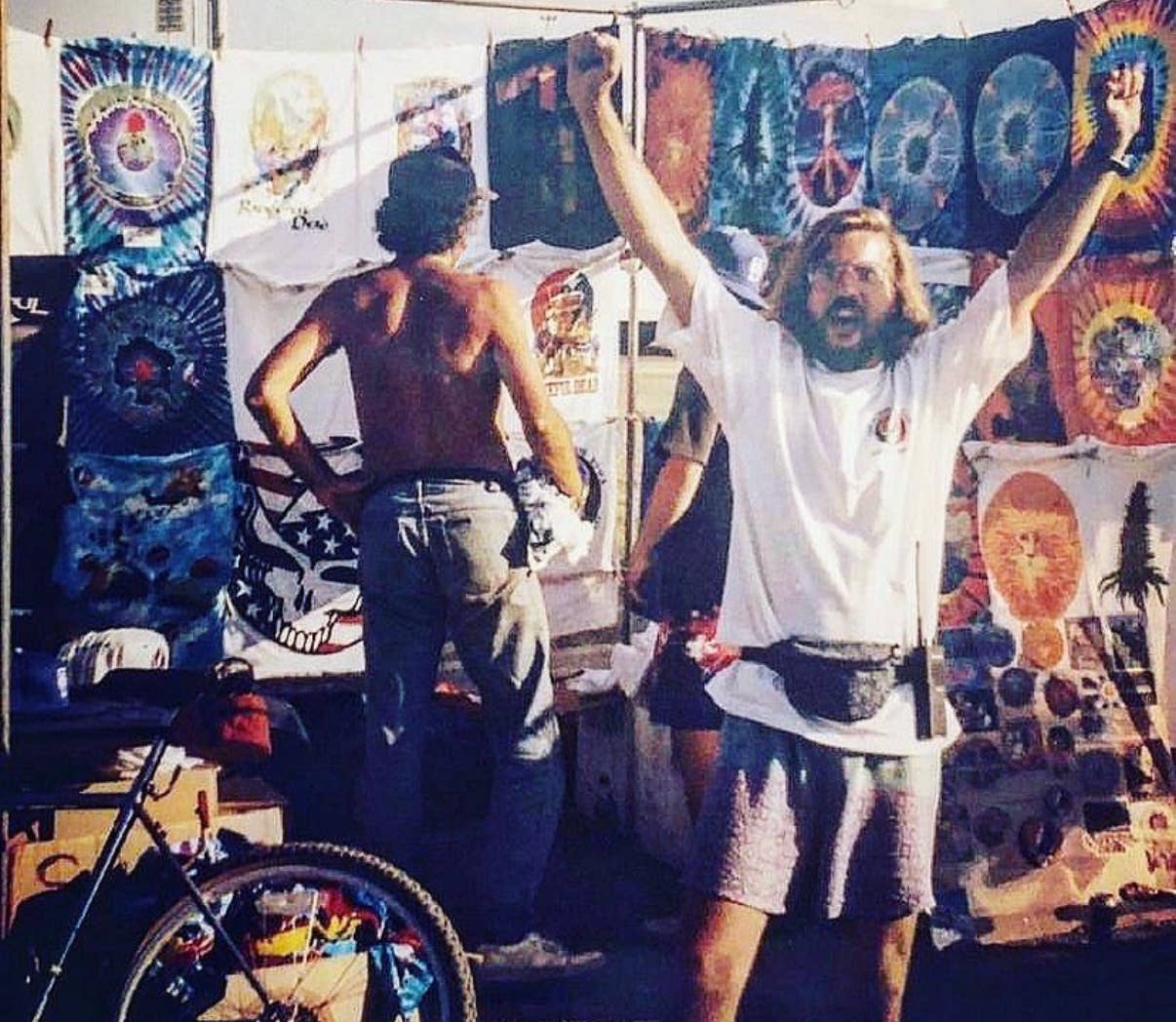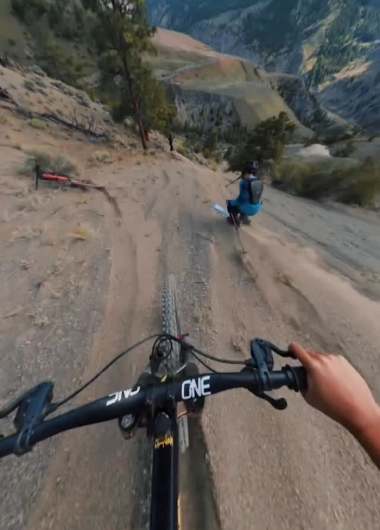Popular Stories
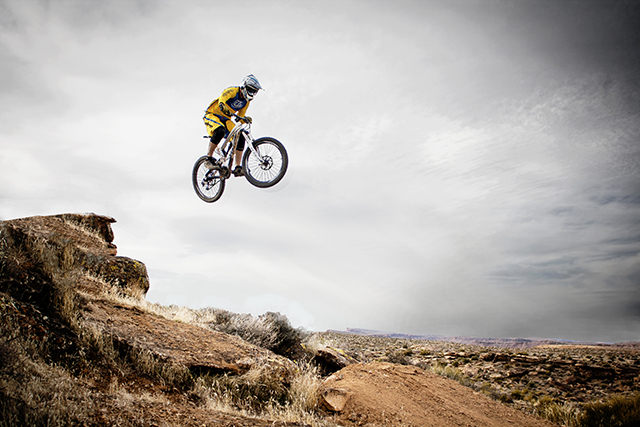 It’s no 73-foot Rampage
It’s no 73-foot Rampage
gap, but Southern Utah has plenty of places to cut your chops with a huck fest
of your choosing. Greg Mazu photo by Flickr creative commons.
For most passers-by, Washington County, Utah is
just another pit stop for extra large bathrooms
and the last major cache for 64
oz. sodas before hitting Las Vegas, some 120 miles to the southwest.
Road signs
direct tour buses towards the entrance of Zion National Park, with caravans of
RVs following suit. It’s a tourist trap for the armchair traveler, but it’s a
mountain bike mecca for anyone who’s heard names like Rampage, Gooseberry or
Grafton thrown around in video parts or magazines.
THE SCENE
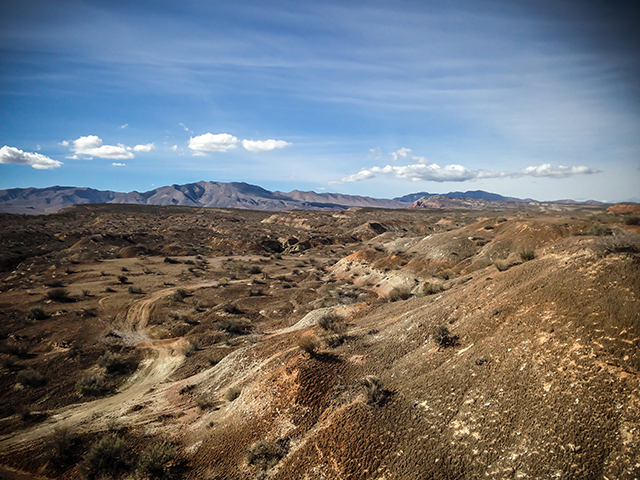 Taking a page from an
Taking a page from an
online dating profile, the Bear Claw Poppy Trail system is practically meant
for sunsets and long strolls in the desert. Stephanie Nitsch photo.
Washington County is more often billed by a
generic location: Southwest Utah. Just a few miles north of the Arizona border,
it’s an enchanting area packed with legends and petroglyphs, national parks and
quirky Utah laws. Mars-like landscape is upended by monolithic rock spires and
prehistoric mesas, all of which make for an otherworldly setting for the area’s
couple hundred miles of singletrack and rogue trails.
Pods of trails spread as far north as Cedar
City and Brian Head, 30 miles away, but the bulk of Southwest Utah’s bike scene
span east to west, stringing the small towns of Springdale, Rockville, Virgin,
Hurricane (HURR-uh-kin), La Verkin and (and slightly bigger town) St. George
together by a squiggly highway.
For over a century, it’s been a place that’s
appealed to pioneers and propagated by legends. Mormon settlers first staked
claim along the riparian banks of the Virgin River in the 1860s hoping to literally
cultivate the Dixie Land of the West by growing cotton. (The crops failed and
the settlements were wiped out by Native Indians, but the name stuck, hence the
area’s allegiance to Dixie.) Ghost stories and curious folklore are rooted in
non-fiction (Google “Grafton Ghost Town” or “Flying Monkey Mesa” for good
campfire stories). And among all its history, the American West pioneer spirit
lives on in modern ways, attracting a generation of explorers that eschew covered
wagons for mountain bikes.
THE TRAILS
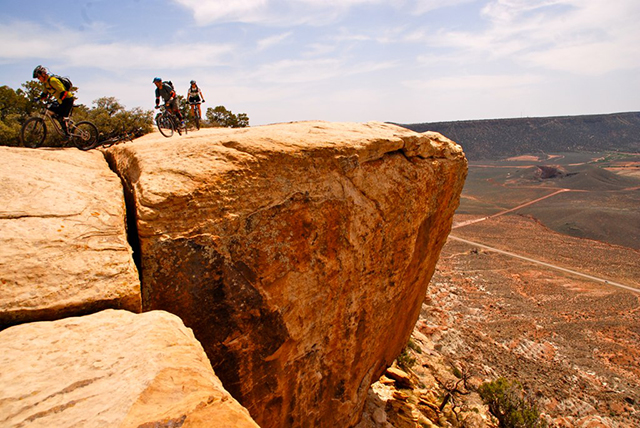 Pop, lock and drop it.
Pop, lock and drop it.
Techy ledge drops are everywhere in Hurricane, Utah... some with more exposure than others. Greg Mazu photo by Flickr creative commons.
Southwest Utah, particularly the “town” of
Virgin, is arguably the birthplace of freeriding in the U.S., gaining notoriety
from its malleable rock faces and unmistakable red mesas. It all provides an
infinite canvas for big mountain biking and treacherously raw and technical
lines – jagged rock fragments always laying dormant, waiting to claim flesh.
And because of loosely regulated public land laws, creating your own big
mountain line on BLM territory is technically legal, though not always
encouraged.
The legendary Grafton Trail is one of the oldest established freeride trails in
the area. Utah’s pilgrims were the first to build the trail in the 1860s,
etching permanent wagon wheel imprints into a rocky, cliffside road on Grafton
Mesa. But in 2002, it was repurposed as another kind of trail and became
synonymous with freeride mountain biking, when a young Kyle Strait was filmed
boosting over the Grafton Gap in
New
World Disorder III
– and just a year after Red Bull’s first experiment with
Rampage.
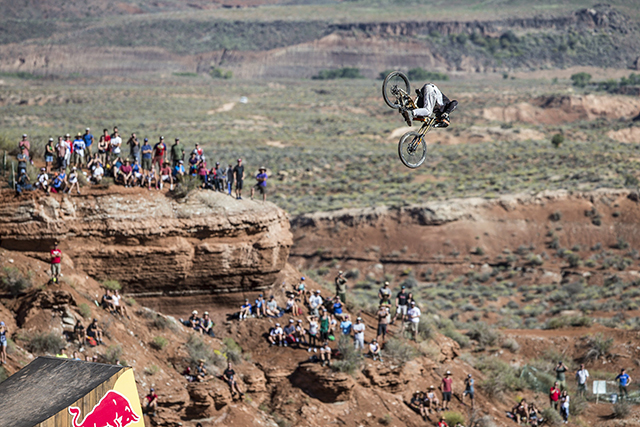 Tom Van Steenbergen front flips the canyon gap at finals during Red Bull Rampage in Virgin, Utah, this fall. Redbull Content Pool photo.
Tom Van Steenbergen front flips the canyon gap at finals during Red Bull Rampage in Virgin, Utah, this fall. Redbull Content Pool photo.
But for the more traditional trail user and
the majority of riders, well-defined trail systems are a little more approachable.
The Bear Claw Poppy system, a rolling network of sun-bleached XC trails on the
south end of St. George, weaves together mellow ascents of a few hundred feet
with smooth, pedal-less descents on the way back down.
Further to the east, three
separate mesas – Gooseberry, Little Creek and Guacamole – have been graffitied with
rock cairns and white paint, the official signage for any of the mesas’ numerous
lollipop trails that oscillate between undulating slickrock crags and prickly
juniper forests. And all over Dixie Land, stand-alone trails like the JEM (Virgin), Church Rocks (St. George) or Suicidal Tendencies (St. George) stick
out as classic cross-country routes with an occasional touch of desert flow –
though the latter two known more for their singletrack technicalities.
Join Our Newsletter
THE CLIMATE
 It’s okay to make mountains
It’s okay to make mountains
out of molehills on the Bear Claw Poppy Trail in St. George, Utah. Stephanie Nitsch photo.
The summers here are brutal – cresting triple digit temperatures for days on
end and requiring any outdoor recreationalist with a heartbeat to seek shade
and refuge between about 9 a.m. and 7 p.m. But spring and fall are primed for
bike trips, taking away the sting of UV rays and making the area inhabitable
for a short while. As seen during this year’s Rampage, torrential rain pour and
flash floods do happen this time of year, and they are catastrophic if you’re
caught in the wrong place. When rain does hit, the desert sand turns to thick
clay – definitely not in that ‘hero dirt’ kind of way – and becomes nearly
impassible for bike and car tires.
Where To Eat
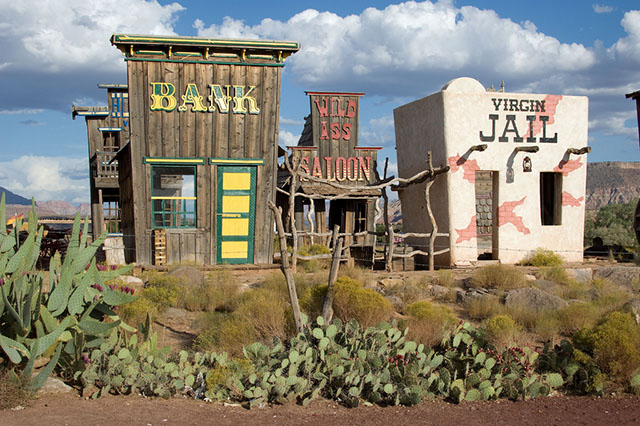 Welcome to Boom Town, USA.
Welcome to Boom Town, USA.
Virgin, Utah’s downtown scene is on the verge of revitalization. Djof photo by Flickr creative commons.
River Rock Roasting Company in La Verkin has Southern Utah’s best coffee and massive homemade
cinnamon rolls – best consumed while sitting on the outdoor patio, which seems
to abruptly cascade over the edge of the Virgin River canyon.
George’s Corner in downtown St. George is a three-meal-a-day kind of place, where
the pub food is reliable and tasty but the drinks are as legally weak as they come.
Just down the street,
25 Main Café is a sweet,
unexpected little bakery and bistro that serves up savory morsels and decadent
cupcakes. ($1 cupcakes after 7 p.m. Just sayin’…)
CAMPING | LODGING
Ample BLM land means a staggering amount of
free dispersed camping, but the most popular spots skirt the rim of
Gooseberry Mesa or stem off from Highway 9. It goes without saying (but it’s
worth saying anyways) that it’s wise to avoid setting up camp in or around
trenches and washes, as even a little bit of precipitation can cause a flash
flood to take out your site. Alternatively, fork over a few bucks for a site
inside Zion National Park, where tourist season dies off in the fall and
usually takes the annoying campers with it. For amenities on a moderate budget, the Inn at St. George is
a humble motel surrounded by “downtown” amenities and is run by a few mountain
bikers who might just be inclined to show you around.
What Bike To Bring
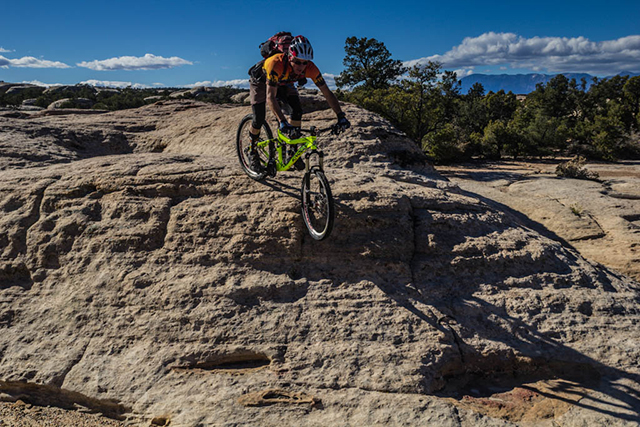 Whatever steed you choose, grippy tires are a good bet at Gooseberry Mesa. Greg Mazu photo via Flickr.
Whatever steed you choose, grippy tires are a good bet at Gooseberry Mesa. Greg Mazu photo via Flickr.
If you believe in the fat bike hype,
Gooseberry Mesa is a surprisingly fun playground to bring out the 5-inch tread.
Hardtailers and singlespeeders are common sights too, but a trusty
full-suspension of any size gets the job done. Whatever your steed, bring it to Over the Edge Sports in Hurricane or Red Rock Bike Shop in St. George (which has an awesome virtual trail map here) when you
need to get it dialed in or tuned up. For less of a DIY style, Paragon will outfit you with a guided and catered 3-day bike-camping
trip, shuttling you between various trail systems.
